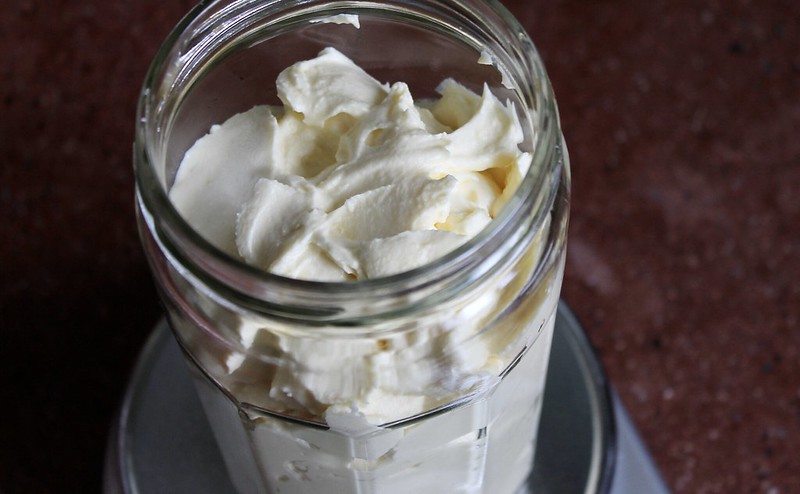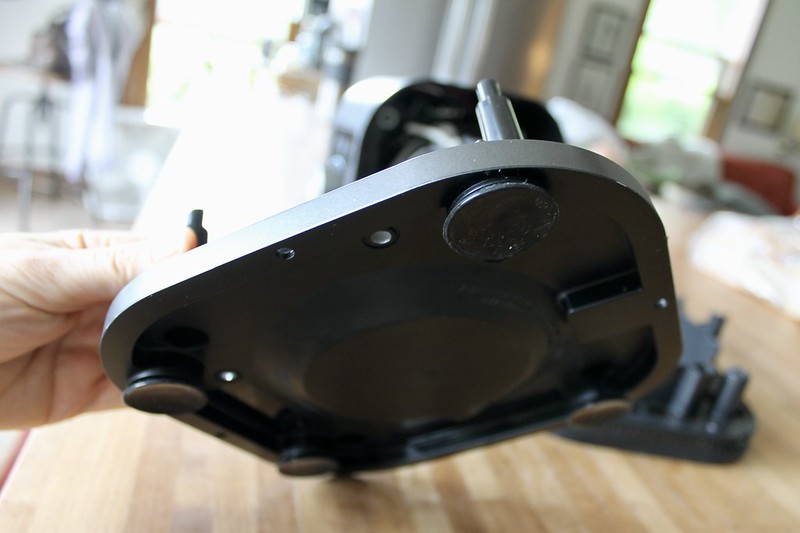It all started when a friend posted a photo of his wife’s tiramisu on Facebook. I inquired after the recipe (as one does) and when I saw that the filling was just eggs, a little sugar, and mascarpone (no whipping cream?!), I was intrigued. It sounded simple, like actual food — eggs, cheese, coffee, and booze. So naturally I had to make it.
Which meant I needed to make the mascarpone.

I had some expired crème fraîche culture packets stashed in the freezer from whoknowswhen — and mascarpone is just drained crème fraîche — so I whipped up a batch (see yesterday’s YouTube video) and then turned right around and made the tiramisu.
I thought it was delicious but no one else seemed too keen. The alcohol is too strong, they fussed.

Two tablespoons of rum and it was too strong? Geez.

But then I mentioned the tiramisu at work and one of the bakers got all excited. I make tiramisu, she said, and then in once forehead-slap second I recalled a small but mighty fact: she’s Italian. (While pounding butter blocks and glazing pastries, she’s regaled me with the most marvelous tales of her family basement stuffed to the gills with gallons of homemade wine, ropes of garlic and onions, and the huge Parmesans her uncles buy from a wholesaler.) We promptly launched a recipe comparison and, much to my delight, my recipe was almost identical to hers.

Except!
*her proportions were scaled up, since she made a bigger pan
*her recipe called for mixing the alcohol into the pudding and dipping the ladyfingers in just the espresso (I dipped the ladyfingers in a rum-espresso mix, no alcohol in the pudding)
*she used 1 cup — one CUP — of alcohol
*she used brandy instead of rum


So I made another batch of mascarpone and then another tiramisu, this time with brandy mixed into the filling (but just a half cup, since I’m modest like that). It was better. The alcohol was stronger, yes, but it felt less bracing and more cohesive. Perhaps the fat from the eggs and cheese had tempered it somewhat?

Still, no one in my family much cared for it because: Alcohol. And my mom was like, Raw eggs, Jennifer? Which made me laugh because she basically raised me on ice cream made with raw eggs (and then later it occurred to me that tiramisu is pretty much just a cheesecake version of eggnog but minus the nutmeg).

I made a bowl of tiramisu with the excess
So after I ate my fill, I passed the bulk of it off to a friend. She texted later, “That tiramisu was the bomb!!!!” and when I followed up to see what she thought about the alcohol (more? less?), she said, “I liked it, but a little less booze would be ok.”

So there you go: if you like booze and coffee, then I expect you’ll like tiramisu. If you don’t, then you won’t. End of story.
P.S. I didn’t take any cross-section photos of the second tiramisu but here’s a photo of the first one:

Note that a bunch of the espresso settled to the bottom. This was, perhaps, because my layers of pudding were too thin and didn’t create a sufficient barrier. With the second tiramisu, I made more substantial pudding layers, which omitted the soggy bottom.
Tiramisu
Adapted from a mash-up of recipes from Grace and Maria.
*I never measured my mascarpone: I just made 1 quart of cream into cheese and then used that.
*Three double-shots of espresso were sufficient. If you don’t have an espresso maker, just use really strong coffee.
*I used Balocco Savoiardi Ladyfingers — Amazon sells a big bag which makes enough for a double batch of tiramisu.
*Make sure the espresso is cool — otherwise the ladyfingers will disintegrate.)
*I used a small rectangular pan (maybe 7×11 inches?) and it overflowed, so go with a 9×13 pan, or a large springform pan.
1 pound mascarpone, approximately
4 eggs, divided
½ cup sugar, divided
½ cup brandy
1 ¼ cups espresso, chilled
about 30 ladyfingers (approx 300 grams)
unsweetened cocoa, for dusting
Beat the egg whites, gradually adding ¼ cup of sugar, until stiff peaks form. Transfer to another bowl and set aside.
In the same mixing bowl (no need to wash it), beat the egg yolks and the remaining 1/4 cup of the sugar for 3-5 minutes, until fluffy and light in color. Beat in the mascarpone. Fold in the eggs whites. Stir in the brandy.
Quickly dip the ladyfingers, one at a time, in the espresso and arrange them in a single layer in the bottom of the pan. Dollop in half the pudding and spread it smooth. Repeat with a second layer of espresso-dipped ladyfingers and the remaining pudding. Dust the surface liberally with cocoa powder and transfer to the fridge. Allow the tiramisu to chill for at least 12 hours before serving. (You can eat it right away but the ladyfingers may still have a bit of a crunch to them; after 12 hours they should be completely soft.)
Tiramisu lasts in the fridge for dayssssssssss.
One more thing: I sent some of the tiramisu (from the second batch) in to my Italian co-worker.

Here are some clips from her texts: There’s something about the cream that’s pretty different from mine but that may be because it’s homemade mascarpone. And, The cream is a bit more sweet and rich than what mine turns out to be. And, I also use significantly more alcohol. She thought the coffee should be stronger, but when I told her how much I used, she said maybe I just needed to dunk the ladyfingers in the coffee a tad bit longer. Also! I really like it and I’m quite picky with my tiramisu.
This same time, years previous: the quotidian (8.10.20), my beef obsession, the quotidian (8.10.15), goodbye, getting my halo on, how to can peaches.









